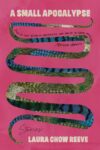On Cult Classic by Sloane Crosley, Sedating Elaine by Dawn Winters, and Disorientation by Elaine Hsieh Chou
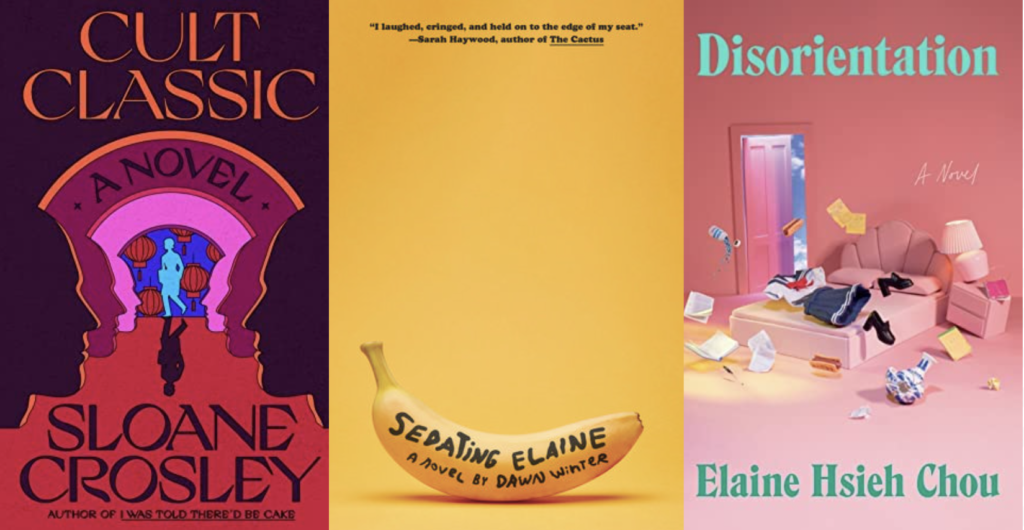
This essay was first made available last month, exclusively for our Patreon supporters. If you want to support Full Stop’s original literary criticism, please consider becoming a Patreon supporter.
A few years ago, the focus on closure that I had noticed throughout a lot of the late 2000s / early 2010s seemed to be overtaken or overshadowed by the proliferation of a few kinds of stylish posturing: “Ghosting” as a breezy way to deal with people you no longer want to talk to, the blunt “you don’t owe anyone anything” mantra presumably meant to help individuals maintain their middle-finger-up exteriors while actually just revealing a sad lack of understanding of how relationships work, and an online shorthand recently unfortunately referred to on Twitter as “dump him feminism.” The hunt for closure—reflected in popular rom-coms like What’s Your Number and He’s Just Not That Into You, among others—seemed to be stalling in favor of this kind of attitudinizing, which got its momentum not from the idea that closure is a necessary and worthwhile pursuit at the end of every kind of troubled relationship, but rather from the idea that we never need to let anything get tangled enough to warrant it to begin with (and if we do, we can just airily, frostily, or wickedly, cut ties.) But as the future continues to unravel around us, it feels like the concept of closure has been conspicuously lurking in the background of recent contemporary novels, even as the reasons to seek it out may seem like they’re shrinking. It’s hard enough to live with no real answers to questions that pose existential, universal dilemmas, let alone intimately personal ones; some people will go to the ends of the earth for closure, while others maintain until their last, hypertensive breath that it doesn’t exist.
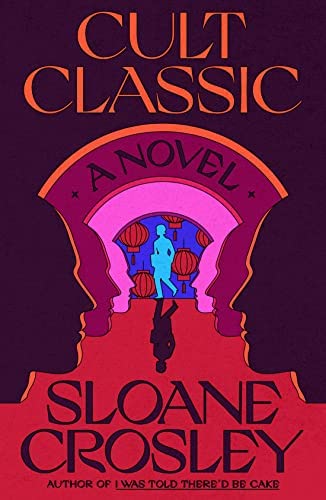
Cult Classic, Sloane Crosley’s second novel, follows Lola, a woman about town in New York engaged to a staid man she calls “Boots.” Out at dinner one night with her former boss and coworkers—who have congealed into her main friends as time and habit and forty hours a week can do—Lola runs into an ex of hers. Then it happens again, with another ex, on another night, and keeps happening (she has a lot of exes). When Lola’s best friend brings her to a meeting of what can only be described as a cult, run by their old boss, Lola is unnerved to learn that these unceremonious run-ins are entirely by design. The cult is using a mysterious combination of hive-mind meditation and subliminal messaging to engineer her meetings, ostensibly with the goal of getting Lola closure, so she can move on and be happy with Boots—her memories of unfinished business no longer threatening to calcify into regret and ruin her engagement or future. Lola agrees to participate once she believes she knows the full story, though Crosley pulls off a clever twist at the end that engenders the kind of indignation in the reader that Lola had swallowed herself, hoping against hope the system would work.
The book has lovely, stylish prose, somehow hitting the tinny notes of irony, despair, and ambition involved in moving on from relationships, without feeling like an AI absorbed a bunch of those “i’m in my russian doll leather dress hoop earring editor heels muji pen skinceuticals 12-3-30 breakup ottessa sally raven era” tiktoks and spat out a book. Cult Classic doesn’t suggest that closure isn’t useful, or necessary, or even real—though the ending might tease at the idea—but it does counsel that our understanding of any closure we may believe we have secured is without a doubt susceptible to suggestion by forces outside of our control, and it would behoove us to remember that.
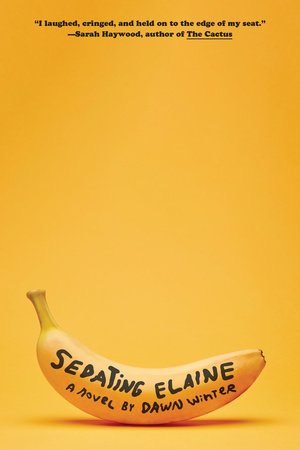
For those who are reluctant to admit that closure is what they’re looking for, even if it’s out of the corner of their eye, that reluctance can curdle everything else. That’s one of the keening reminders in Sedating Elaine, Dawn Winter’s debut novel. Frances, the protagonist, is slinking around town, mourning her break-up with Adrienne, one of those unassailable women armed with a perennially poised cell, manicure, and gravity-defying cut. Adrienne’s togetherness serves, in part, to highlight Frances’s own hunted nature—at some point Frances learned that Adrienne had referred to her as “Oliver Twist with tits”—but Frances’s current, accidental girlfriend, Elaine, isn’t like them. Elaine doesn’t fit into one of the more common sapphic character traps dogging contemporary lit; unlike a lot of the dreary bisexuals haunting the literary marketplace with cigarettes dripping from their fingers, sharp observations drifting through their heads after (usually straight) sex, and solipsistic musings, Elaine takes up space, can’t tell when she’s being snubbed, and is annoying in a very different way. She is joyful in a childlike manner that Frances finds irritating, adores tchotchkes, owns a daunting selection of sex toys and loves her overbearing mother with a sickly sweetness. Frances is the first woman Elaine has been with; her appetite is insatiable and her enthusiasm boundless, if lacking a certain amount of finesse. The two of them are described in detail as having so much sex that Frances is frequently spent to the point of queasiness.
Frances is too weak-willed to break up with Elaine even once she admits to herself how much she doesn’t like her. After realizing that she owes too much money to her drug dealer, Dom, who won’t let it slide anymore—and clocking that Elaine has money money—she swallows her unease and invites Elaine to move in, planning to use her share of the rent to pay off the dealer. But, literally unable to deal with Elaine once she’s inside, Frances decides sedation is her only option. When Elaine finally succumbs to the cocktail of drugs that Frances slips her, Frances runs around town trying to figure out what to do while she waits for Elaine’s check to clear. She misses work as a kitchen porter, dodges Dom, and all the while fails to move on from the break up with Adrienne—a hang-up which, we are led to believe, allows her to avoid thinking too much about her father’s death or the estranged nature of her relationship with her mom.
Unfortunately, the main idea put forth about closure in the novel—that if you’re lacking it in one area, chances are you’re avoiding looking for or working towards some semblance of it elsewhere—was overshadowed by the extremely repetitive, disgusted descriptions of Elaine. Some examples:
Elaine was grappling with her breasts, trying to wrangle the bulbous objects into one of Frances’ small sports bras, which would have been difficult enough without her jogging on the spot.
[Frances] felt hounded in the flat, humped around every time she dared bend over to pick up a bag or the junk mail; Always, there came Elaine and her great groping hands, grinding against her and feeling around.
Back in the bedroom, Elaine was sitting up with her legs crossed like a yogi, facing the open doorway. Another person might have looked spiritual and lovely in such a pose, but Elaine looked obscene. Why did she seem to be perpetually peeling open? Frances often felt like she wanted to fold her back in and zip her closed.
…now that they lived together, Elaine scarcely bothered with clothes at all, she just walked around naked all the time, which made her seem even larger and to sprawl further, as if zips and buttons had been reining her in all this time and now flesh came bursting out in all its orgasmic freedom. Bulbous boobs, big bush, a broad stomach with a bit of a pot belly, especially as she stood with her hips thrust out and her hand on her waist.
Pinned beneath Elaine’s behemoth weight, smothered by her girlfriend’s strangely masculine bulk—now, apparently, cohabitating—she felt helpless.
Plenty of people realize slowly or all at once that they dislike someone they’re screwing, but Sedating Elaine on this issue was a little much. Maybe Frances’s disgust was meant to be a mechanism by which she was letting some other, less digestible negative emotions leach out. And perhaps it’s less the sickening imagery in these passages and more the amount of them that has turned me off. In any case, it overpowers the book, including the quick ending: the harebrained scheme Elaine comes up with to deal with her issues backfires, and can only be fixed with a tidy sum of money. The way that Frances and Elaine are able to move on afterwards (as friends, no less) is only as believable as Elaine herself is believable, so that’s up to you. It felt like too neat an ending, like the author had insisted on closure for not just Frances, but for Elaine, and for us.
The other tidy ending, that of the subplot of Sedating Elaine—sub as in not main, but also sub as in the subconscious driver of Frances’s pain, the memory she tries to submerge among all others—is about the way she may or may not have been responsible for an ugly death in her childhood. The guilt she has for this is of course woven into her grief over her father, her anger at her mother—supposedly, grief is at the heart of everything Frances does—but in the end, she finds a way to deal, finding some measure of closure with all of it, pretty much by deciding to muster up the courage to knock on the door of someone who could give it. It helps, of course, that Frances was just a child herself at the time of the other death, and it wasn’t her fault. The end result here seems to suggest that once you’re slightly less miserable than you have been in the past, it might be easier to dredge up the energy to seek out the closure that will help you move on with your life. (I’m not convinced; from what I’ve seen, in best case scenarios, it often looks to me like people stop looking for closure once they’re no longer as miserable as they used to be. But it’s perhaps a YMMV situation.)
Sedating Elaine is a little dark, sure; people are drugging people and dealers are threatening their customers’ genitals with curling irons, and there’s pining for exes who don’t want them and parents who are long gone. Supposedly the part that makes this book a dark “comedy” is the drug part, but it wasn’t all that funny. And I don’t mean that in the “drugging women isn’t funny” way, but in the “I think we’ve lost the meaning behind ‘dark comedy’” way. Women with baggage slinking around town being messy before they heal from some kind of trauma is not siloed to books, but it garners quick praise, even when the baggage is used or misused as a redeeming mechanism in and of itself (as I’ve discussed a bit before). The New York Times review for Sedating Elaine is a bit of a rave but even says this part out loud: “In the final third, Winter flinches from pure black comedy by redeeming Frances and revealing a traumatic past.”
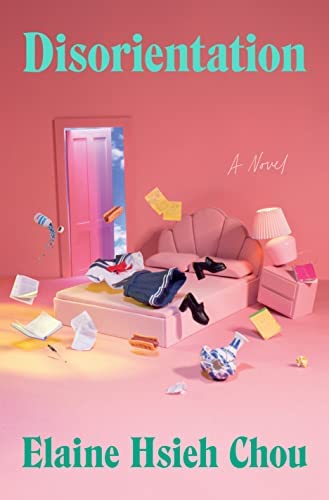
Unlike Sedating Elaine, Disorientation by Elaine Hsieh Chou achieves dark satire without sacrificing the integrity of its story, with the sly question of whether closure is attainable woven throughout in a more sophisticated, subtle way. This debut follows Ingrid Yang, a young woman slogging through the eighth year of her PhD program, in a department she was guilted into by her white advisor, Michael Bartholemew (who is also the chair of the East Asian studies department) who sees no end to her potential. She’s supposed to be writing a genius dissertation on Xiao-Wen Chou, a fictional poet known as the “Chinese Robert Frost,” who, though deceased, has been the recent recipient of criticism from younger academics who believe his writing pandered to white people. When Ingrid makes a shocking discovery about him in the archives—which in turns allows her to discover his greatest secret—it sets her on a path to shake up the university and wider academic world, if only she is brave enough.
Ingrid, throughout most of the book, thinks her greatest enemy is Vivian Vo, a student in the postcolonial studies department who is very critical of Chou. Ingrid’s best friend, Eunice, shares her disdain of Vivian’s campus activism. Ingrid’s white fiancé Stephen translates Japanese literature (without speaking Japanese) and becomes famous for a translation of a book that wasn’t nearly as sexual as his translation is. Then Ingrid finds out that all his ex-girlfriends were also Asian. Her moral compass spins wildly out of control as she tries to maintain a handle on her sanity while saddled with a bombshell of a secret and imploding relationships, and the campus politics begin to spin into a frenzy, culminating in a keen satire.
Closure isn’t one of the obvious themes of Disorientation (though if there’s one kind of pursuit in the humanities where closure will be forever beyond your reach, it’s archival research—there will always be more folders, in more boxes, in more collections, in more aisles, in more libraries, in more states or countries.) But Chou does poke at the questions that force uncomfortable growth for her narrator. It’s one thing to need closure—or think you need it—when you’ve dated a jerk for a long time, or the potential love of your life at the wrong time, or when you cannot figure out what went wrong at whatever time. But to slowly realize your advisor, and your boyfriend, not to mention the department and school at large, have been fetishizing or tokenizing you since the moment you met—to find out that your heroes, academic or artistic or otherwise, are fraudulent at best—to discover that your academic pursuits of several years may have been rendered worthless; how do you move on from that, when nothing really changes except your own scope of understanding? Or, to put it another way: How do you accept something and move on with calm in your heart, when everything continues to get worse? Ingrid opts out. She leaves academia, works a minimum wage job at a factory, moves back in with her parents and convinces them to stop hoarding, and does, of course, break off her engagement with Stephen, who never apologizes or even reckons with his own treatment of hers.
The author, Chou, has written and discussed in interviews that she feels her anger from her own experiences with being fetishized was useful in helping her craft the book, saying in an interview with Vogue:
I was almost giddy to wield power over people like [Ingrid’s culturally appropriative turned all-out-xenophobe PhD advisor] Michael and Stephen because I felt that men like them had power over me. It was really delicious and freeing to be able to turn the tables and be like, No, now you’re under my thumb. Anger can be nourished; it gets a bad rap when in reality doing justice to anger is me holding people accountable.
All three of these books gesture towards some new ways of thinking about closure, with varying degrees of subtlety and success. Frances finally knocks on her mother’s door; Lola gets closure, believing she finally understands what happened with her exes, and then has it revoked; Ingrid’s life is changed so fundamentally by the experiences she has during her year of discovery that the closure she achieves turns out to be the most illusory, and tenuous, of the three: The book’s literal last page ends with another small revelation Ingrid has, brought on by a visitor at her new job, that proves your past can always pop up again, a jack in the box perennially wound for surprise.
In a recent essay about the novelist Iris Murdoch, writer Maria Popova quotes her on the illusion of closure:
Loose ends can never be properly tied, one is always producing new ones. Time, like the sea, unties all knots. Judgements on people are never final, they emerge from summings up which at once suggest the need of a reconsideration. Human arrangements are nothing but loose ends and hazy reckoning, whatever art may otherwise pretend in order to console us.
Insisting that closure isn’t real—often a position regarded as blunt, cold, hard, and true—might be more hopeful than to assume we can leave things in the past behind us, all figured out. Sincere hunts for closure always seem to me to be achingly earnest—like the girl who gets to be the exception in He’s Just Not That Into You. Militant opposition to closure might not feel any better, but if Cult Classic and Disorientation work, I believe it is in part because the approach to closure is that of a tease: maybe it’s there for the taking, maybe it isn’t, maybe we can achieve it if we’re determined enough, maybe it will come naturally if we find some way to opt out at least a little bit. Maybe at the end of the day we can decide it doesn’t matter one way or another.
The idea that we’re always producing loose ends isn’t cause for frenetic energy or a zealous march to tamp them down or tie them up. I now find it’s a comfort, personally, that at the end of every “summing up” is the draw and demand of reconsideration. It may be a small one, but it’s solace nonetheless, that even if we feel like we’re slowly boiling in the pressure cooker that is the US right now, the knots around us may lie untied.
Sophia Kaufman is a writer and editor living in New York. You can reach her at [email protected] or @skmadeleine.
This post may contain affiliate links.






